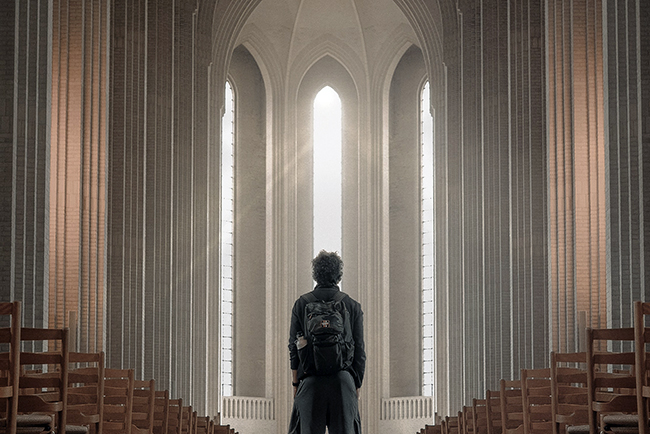
More Americans feel the COVID-19 pandemic is over, but some Christians still haven’t returned to church services.
By Aaron Earls
A quarter of Christian adults in the U.S. say they’re attending church at least weekly, down from a third who say they attended as regularly prior to the pandemic, according to a recent Evangelism Explosion study conducted by Lifeway Research.
When asked about their church attendance before COVID-19, 34% say they attended four or more times in a typical month, 30% attended one to three times a month, and 36% attended less than once a month. Now, 26% say they attend four times a month or more, 31% say one to three times, and 43% say they attend worship services at their church less than once a month. Since the start of the pandemic, the percentage of Christians who say they attend church monthly has dropped seven percentage points: 64% to 57%.
Since the start of the pandemic, the percentage of Christians who say they attend church at least monthly has dropped 7 percentage points: 64% to 57%. Click To TweetNumerous studies confirm churches continue struggling to regain in-person attendees who were lost during pandemic closures.
A March 2022 Pew Research study found only 5% of U.S. houses of worship remained closed for in-person services, but only 2 in 3 regular attenders had returned. A previous Lifeway Research study found 97% of U.S. Protestant churches met in person in January 2022, yet the average church reported attendance at 74% of their pre-COVID levels.
Return to post-pandemic life?
In other surveys, Americans are expressing more confidence about moving into a post-pandemic mindset. A March 2022 YouGov tracking poll found less than 40% of Americans are scared they’re going to catch COVID-19. This is down from 45% in January 2022 and the more than 60% who said the same for much of 2020.
A full third of Americans say the coronavirus pandemic is over, according to a May 2022 Gallup poll. Almost 4 in 5 (79%) say their lives are at least somewhat if not completely back to normal. For 21%, everything has returned to a pre-pandemic normal, while 58% say things are somewhat but not completely back to normal.
Almost 4 in 5 Americans (79%) say their lives are at least somewhat if not completely back to a pre-pandemic normal, according to Gallup. Click To TweetDespite this growing return to normalcy, church attendance has not fully rebounded as some Christians haven’t returned to church services yet. Yet at the height of the pandemic, churchgoers said they planned to return. In a February 2021 Lifeway Research study, 91% of U.S. Protestant churchgoers said they planned to attend in-person worship services at least as often as they did before the pandemic. Few said they planned on attending less than before (6%), rarely attending (2%), or not attending in-person at all (1%).
Restarting the habit of church attendance
This means for the vast majority of still missing churchgoers, their absence is not so much an intentional decision. Rather, it’s the unintentional creation of a new habit. They’ve gotten out of the practice of churchgoing and haven’t made a decisive act to restart.
For vast majority of still missing churchgoers, their absence is not so much an intentional decision but the unintentional creation of a new habit. — @WardrobeDoor Click To TweetThe unintentional absences of churchgoers mean church leaders must take intentional actions. Jesus said the shepherd leaves the 99 sheep to go after the one sheep that is lost. Many pastors are missing more than one sheep from their flock since COVID. And bringing them back will probably take meeting them where they are.
This doesn’t (and shouldn’t) all fall on the shoulders of the pastor. Small group teachers, kids workers, and other church leaders can reach out to those who are missing and help draw them back in. But it will require intentionality and active steps to bring back those who haven’t returned on their own. Restarting lost habits can take work, but that work is easier when you have others walking beside you to encourage you.








